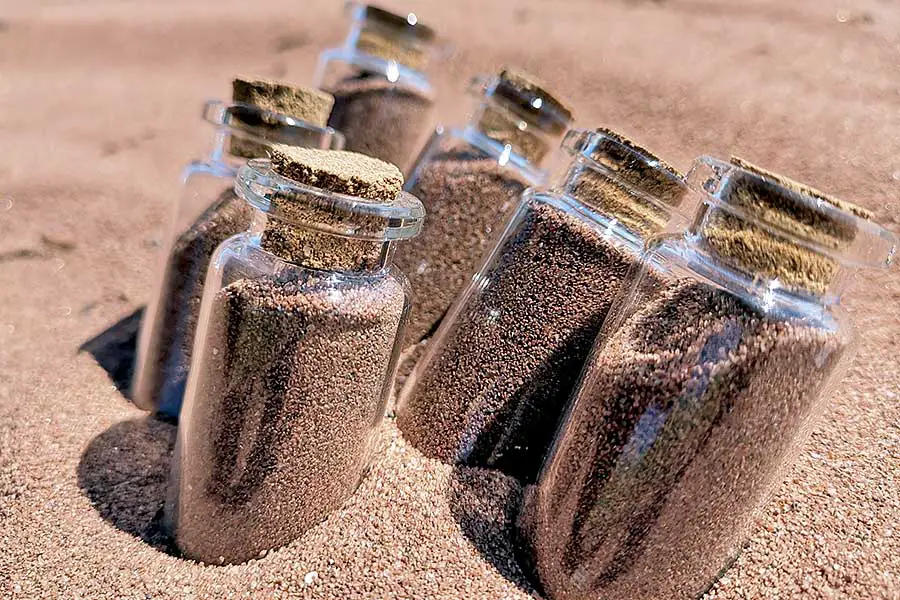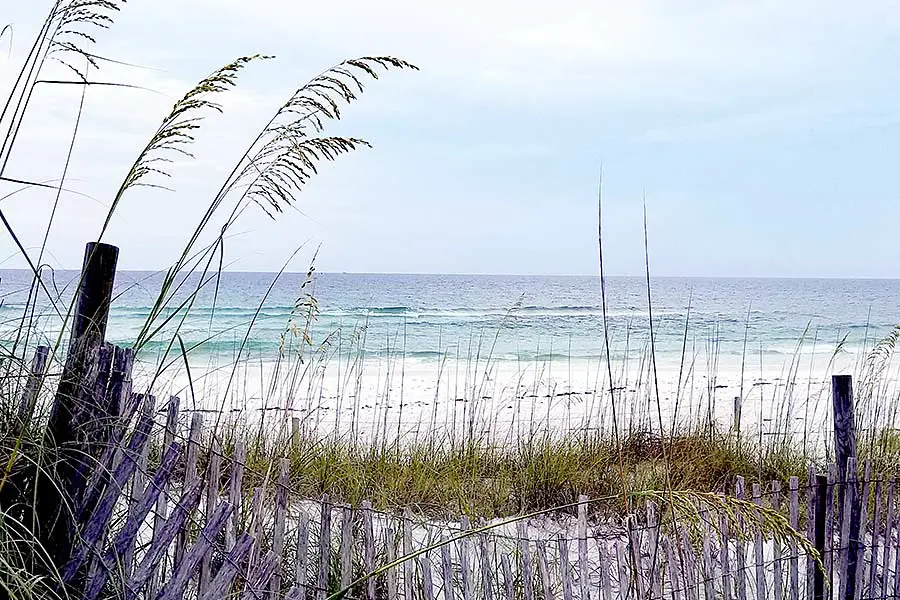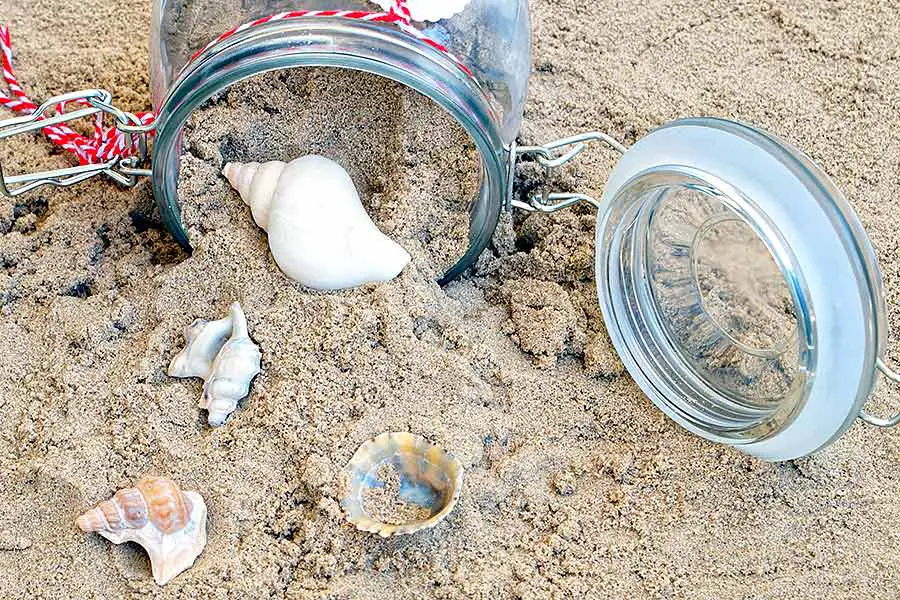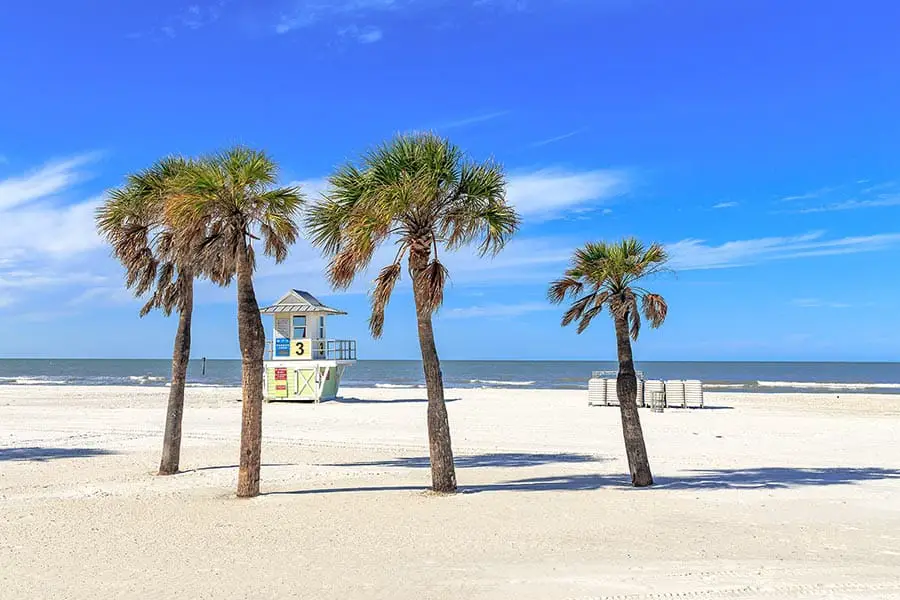
Whether you want to experience the party scene down in Miami Beach, enjoy the Gulf waters in Clearwater, or admire the historical sites in St. Augustine, there’s a beach for everyone in Florida. If you’re a souvenir collector, you may even want to bring home some beach sand to make a decorative piece or just for your own enjoyment. But is it illegal to take sand from the beach in Florida?
You should not take sand from the beach in Florida. While Florida does not have a state law that prohibits taking sand from beaches, many counties and cities have local laws that prohibit people from removing sand from the beach.
The state recognizes that beach erosion is a big problem and allows local authorities to regulate their own stretches of beach sand.
So, where does Florida’s sand come from? Is it naturally white? How deep does the sand go, and what’s underneath it? As you continue reading, you will discover the answers to these beach sand questions and more.
Understanding Florida’s Sand
One of the best features of the beach is the sand. The whites and yellows in beach sand contrast beautifully with the blue sky and the crystalline water that defines the beach experience.
Beach sand is so iconic that people often want to take it home as a reminder of the fun they had in Florida. After all, what’s a mason jar full of sand to a state with 1,350 miles of coastline?
You might think that one mason jar full of sand might not make a difference, but more than 40 million people a year visit Florida.
About 15 million Floridians live within just a few miles of the coast, and even those who live inland like to drive to the beach. If everybody who visited the beach took a quart of sand, Florida’s beaches would lose more than 200 million pounds of sand a year – enough to fill 6,250 semi-trucks to capacity!
Unfortunately, the mindset that “no raindrop is to blame for the flood” can lead people to behave irresponsibly, much to the detriment of natural resources like the beach.

This removal would be a big enough problem on its own, but Florida’s beaches already face serious issues with erosion.
Researchers at the University of Florida estimate that 48% of Florida’s sandy beaches are facing critical erosion, or erosion serious enough to threaten “development, recreational, cultural, or environmental interests.” Beach erosion is so bad in some places that the state has resorted to beach nourishment or the seeding of sand onto the beach by artificial means.
But isn’t beach erosion a natural process? Is it worth changing human behavior since beach erosion happens anyway due to wind and water? While beach erosion is, in fact, a natural process, human activity like the removal of sand, construction of jetties and breakwaters, and coastal development can make this natural problem much worse.
Furthermore, while there isn’t a state law targeted at tourists taking sand, there are many local ordinances that ban the removal of beach sand.
For example, the city of Clearwater explicitly bans sand removal in their municipal code. In addition, the St. Augustine Beach Police Department also prohibits sand removal. While we love and respect our law enforcement officers, be aware that they will have no problem writing you a ticket or even taking you to jail if you violate the law.
Fun Idea
Instead of bringing home a jar of sand, bring home a beautiful photo! Take an empty jar to the beach, fill it with sand and shells, and take some cool pictures with it before you return the sand to the beach — remember that the best lighting is about half an hour before sunset. When you get home, print and frame the photos. This craft lets you memorialize your fantastic beach trip without having to take sand home.

What is Florida Beach Sand Made of?
Different sands are made of different materials. For example, the pure white sands of places like Pensacola Beach and Destin originate from inland erosion of large land masses like the Appalachian Mountains. As the land erodes and weathers, particles drift downstream to the ocean and get deposited at the beach. This kind of sand is mainly made of tiny quartz crystals.
Other beach sands can be brown or even black. Venice is known for having a distinctive and beautiful blackish sand. Dark sand like this is a mix of regular quartz sand and tiny, ground-up fossils. Brown or tan sands, like many of the Gulf beaches have, usually contain ground-up seashells, which gives them a distinctive color.
One of the neatest sand colors in Florida is the orange-red sand found on beaches like Ormond Beach! These striking sands are colored with shell fragments that have absorbed iron oxide from their environment and make for great photo ops on clear days.
Other Posts of Interest
- Is Lake Okeechobee Saltwater Or Freshwater?
- Can You Swim With Wild Dolphins in Florida?
- Why Is The Sunshine Skyway Bridge So Tall?
- Is Cape Canaveral The Same As The Kennedy Space Center?
Is Florida Sand Naturally White?
One might wonder whether the sand in Florida is naturally white or just sun-bleached. While this is a reasonable question, the fact is that Florida’s white sandy beaches are all natural.
The pure white color comes from the geological origin of the sand. White sands are mostly quartz crystals that have ended up at the beach over the eons, as the mountains and land upstream from the beaches gradually weather away.
Phenomenal Florida Fun Fact: The sand used to nourish beaches is usually dredged from offshore “borrow zones” and then pumped back onto the beach.
How Deep is Florida’s Beach Sand?
The depth of the sand varies from location to location, based on specific beach conditions and the local geology of any given beach. However, in general, it’s safe to say the sands range from 4 feet to 9 feet deep.
The further south you travel, the shallower the sand layer becomes; in parts of South Florida, the sand layers may be 3-4 feet deep, but in northern Florida, you may have to dig closer to 10 feet to get under the sand.
Of course, digging that deep would be a challenge. The water table is so shallow at the beach that even small children can easily dig a well in the sand. However, since any hole deeper than a few inches is likely to fill with water as the waves and tides shift, you would need some sophisticated equipment to dig all the way through the sand layer.
What is Under the Sand in Florida?
Like the depth of the sand, the material beneath it varies from place to place.
Generally, the Atlantic coast and South Florida beaches are relatively shallow and sit on top of a layer of limestone.
However, Gulf beaches and the beaches further north sit on top of a thick layer of compacted organic matter that has been washed ashore by storms and the waves and gradually been buried in the sand. This layer of organic material, in turn, sits on Florida’s base layer of limestone.

Is There Bacteria in Beach Sand?
Bacteria are cunning little beasts that are very good at staying alive in hostile environments, and many bacteria like to live in the sand.
Some of the more common bacteria found in beach sand include species like E. Coli, Enterococcus, Salmonella, and Campylobacter. These species might sound familiar because they are often associated with food poisoning and gastrointestinal distress. However, the drug-resistant “superbug” MRSA can also be found in sand.
Sand can also contain an assortment of fungal organisms like Trichophyton Mentragrophytes and Aspergillus, which can be responsible for yeast infections like athlete’s foot and ringworm. More worryingly, there have been some cases of people picking up parasites like hookworms and roundworms on the beach.
If this is giving you the heebie-jeebies, don’t worry! Taking basic personal hygiene measures, like washing your hands before eating and taking a shower after you leave the beach, will help prevent you from becoming sick due to any of these organisms. Also, if you have any open cuts or wounds, you should cover and dress them before going to the beach. Finally, if they’re serious, you may want to reschedule your beach day until they’re healed.
Sand Through the Hourglass
Florida’s beaches are second to none. The beauty and magnificence of the ocean waters, the tropical foliage, and of course, the wide expanses of beautiful sand make our beaches something extraordinary. So it’s no wonder that people often desire to bring home a piece of the beach as a memento of their time here, a reminder of the experience that will transport them back to the sandy shores.
However, taking sand home from the beach is not allowed. While this might seem like a silly prohibition, Florida’s beaches face serious challenges with beach erosion. Once the beaches and the dunes are gone, they’re almost impossible to get back; once coastal erosion begins hitting cities, the problem only becomes worse.
If you want to bring home something to remember Florida by, a jar of beach sand might sound tempting. But in the interest of keeping our beaches healthy and fun for generations to come, consider a different kind of memento:
- A gorgeous sunset photo
- A fun picture of your footprints in the sand
- A seashell
- The memories of an unforgettable experience
Our beaches will thank you.





